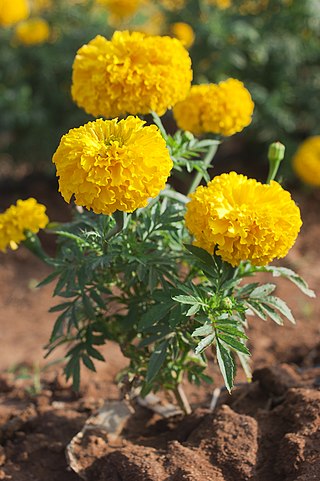
Tagetes is a genus of 50 species of annual or perennial, mostly herbaceous plants in the family Asteraceae. They are among several groups of plants known in English as marigolds. The genus Tagetes was described by Carl Linnaeus in 1753.

Cortaderia is a genus of South American and Central American plants in the Poaceae grass family.

Chusquea is a genus of evergreen bamboos in the grass family. Most of them are native to mountain habitats in Latin America, from Mexico to southern Chile and Argentina.

Schinus is a genus of flowering trees and tall shrubs in the sumac family, Anacardiaceae. Members of the genus are commonly known as pepper trees. The Peruvian pepper tree is the source of the spice known as pink peppercorn.

Griselinia is a genus of seven species of shrubs and trees, with a highly disjunct distribution native to New Zealand and South America. It is a classic example of the Antarctic flora. It is the sole genus in the family Griseliniaceae. In the past it was often placed in Cornaceae but differs from that in many features.

Grindelia (gumweed) is a genus of plants native to the Americas belonging to the family Asteraceae. The genus was named for Latvian botanist David Hieronymus Grindel, 1776–1836.
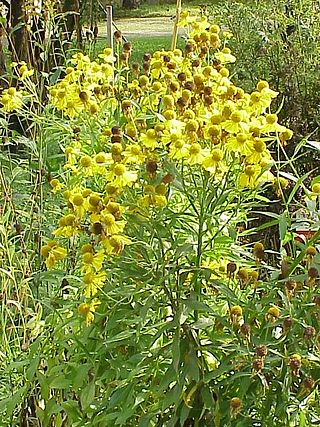
Helenium is a genus of annuals and herbaceous perennial plants in the family Asteraceae, native to the Americas.

Olsynium is a genus of summer-dormant rhizomatous perennial flowering plants in the iris family Iridaceae, native to sunny hillsides in South America and western North America.
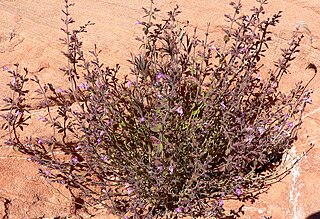
Hedeoma is a genus of flowering plants in the mint family, Lamiaceae. It is native to North and South America. They are commonly known as false pennyroyals.

Haplopappus is a genus of flowering plants in the family Asteraceae found in South America, mostly restricted to the dry regions of the Southern Andes, Chilean Matorral, and Patagonia.

Jungia is a genus of flowering plants in the family Asteraceae. It is native mostly to South America, with one widespread species extending its range into Central America and southern Mexico.
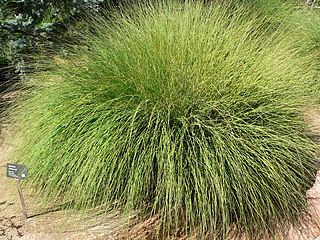
Muhlenbergia is a genus of plants in the grass family.

The Chilean swallow is a species of bird in the family Hirundinidae. It breeds in Chile and Patagonia, migrating north as far as Bolivia, Paraguay, and Rio Grande do Sul.

Nassauvia is a genus of flowering plants in the tribe Nassauvieae within the family Asteraceae. It is native to Argentina, Bolivia, Chile and the Falkland Islands.
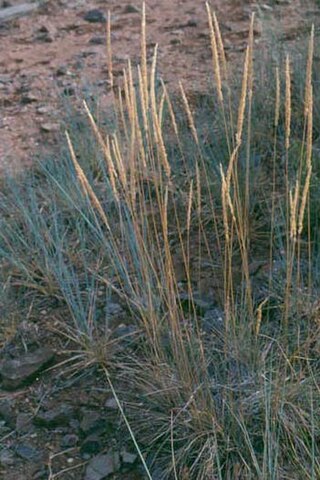
Lycurus is a small genus of New World plants in the grass family, native to North and South America.
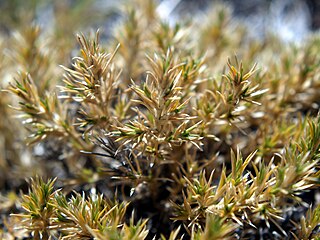
Munroa is a genus of New World plants in the grass family, native to North and South America.

Heterosperma is a genus of flowering plants in the sunflower family, native to North and South America.
Parastrephia lepidophylla, commonly known as tola or tola tola, is a species of flowering plant in the family Asteraceae. It is native to South America and has been recorded from Argentina, Bolivia, Chile and Peru where it is characteristic of the puna grassland ecoregion. It is a resinous shrub, growing up to 2 m in height, that is typically found in semi-arid central Andean dry, or tola heath, puna habitats, at altitudes of 3500–5000 m above sea level, and in the undergrowth of central Andean Polylepis forest.

Dunalia is a genus of flowering plants belonging to the family Solanaceae.

Balbisia is a genus of flowering plants belonging to the family Francoaceae. It is also in the Vivianiaceae subfamily.



















